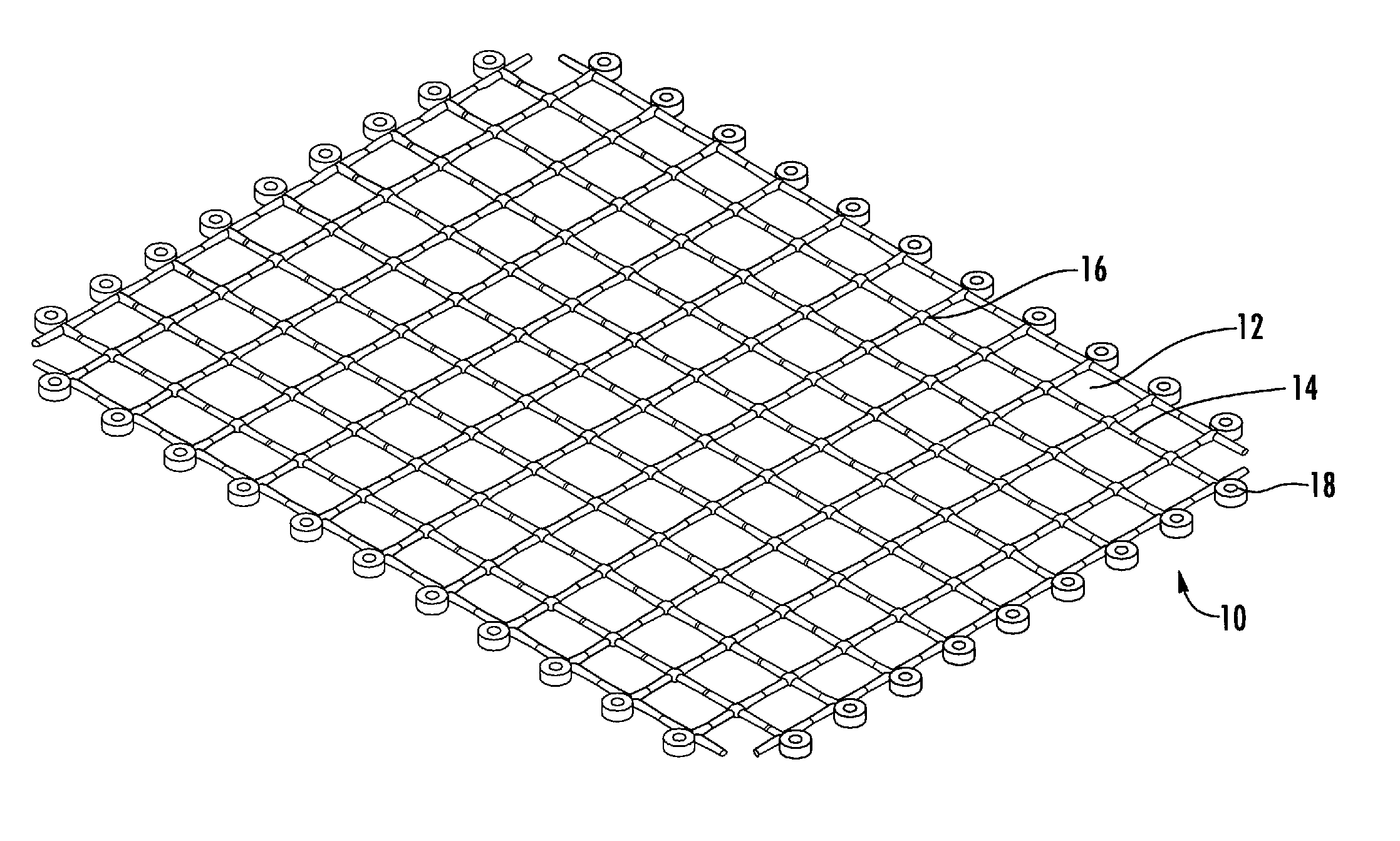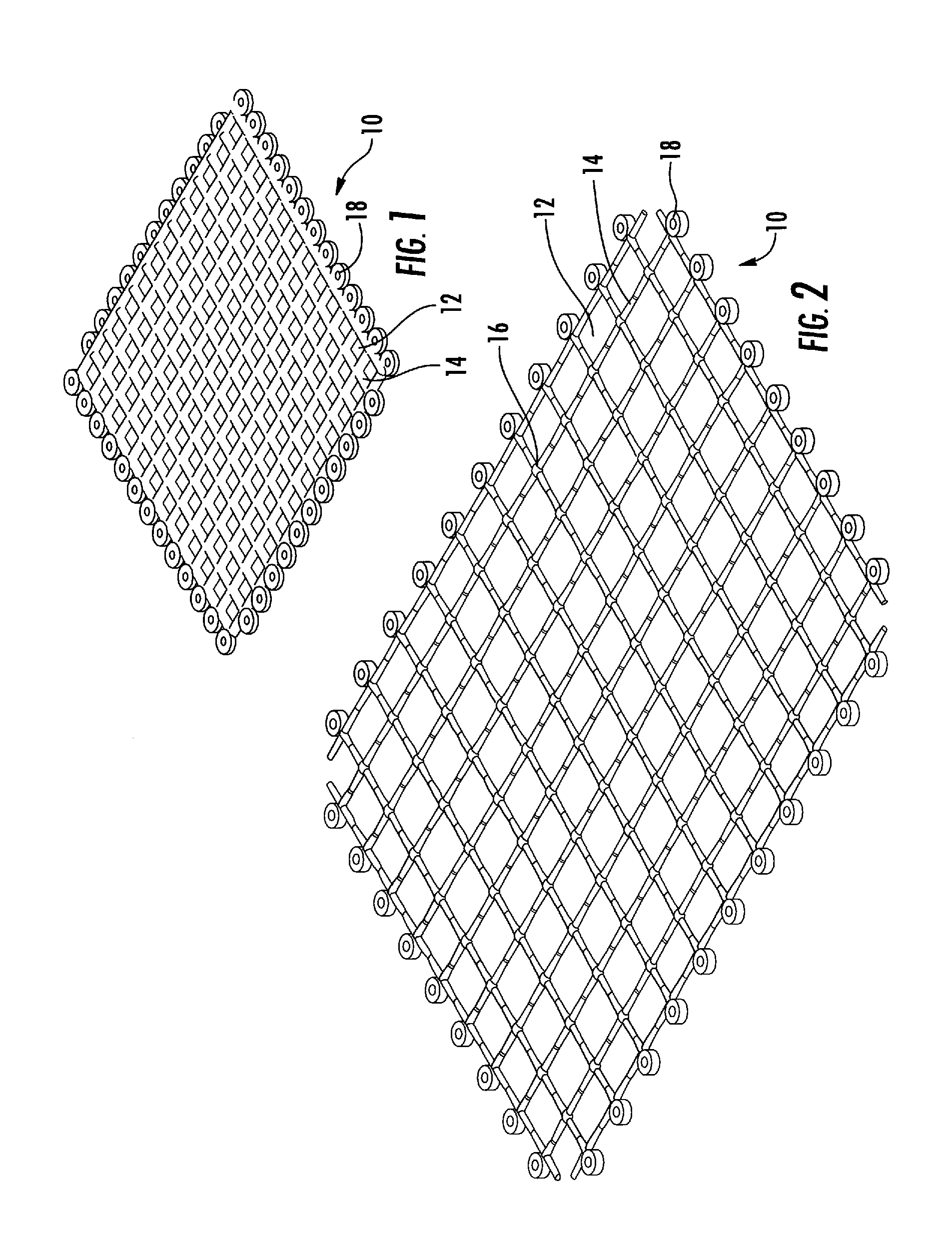Molded and drawn screen
a screen and molded technology, applied in the field of screen technology, can solve the problems of high price and weight, not flat for easy cleaning, and high cost compared to netting, and achieve the effect of reducing shipping siz
- Summary
- Abstract
- Description
- Claims
- Application Information
AI Technical Summary
Benefits of technology
Problems solved by technology
Method used
Image
Examples
Embodiment Construction
[0034]The screen technology described herein can be use in numerous applications. Open ocean aquaculture is considered the most demanding application for the use of screens placed into the ocean environment are subject to attack by predators while the screen must be capable of cleaning. For simplicity purposes, the specification that follows is directed to the molded and drawn screen technology for use in ocean farming situation in view of its most demanding conditions, however, the molded and drawn screen technology is also applicable to static conditions such as geogrids.
[0035]Disclosed is a fish and or predator barrier screen constructed from plastic materials. In particular the plastic materials are made by an injection molded part with multiple, essentially square, holes ½ to ⅙ of the final desired opening size in a uniform pattern, including longitudinal dividers between such holes of 2 to 6 times the final desired screen barrier cross sectional area of the longitudinals respe...
PUM
| Property | Measurement | Unit |
|---|---|---|
| Temperature | aaaaa | aaaaa |
| Time | aaaaa | aaaaa |
| Length | aaaaa | aaaaa |
Abstract
Description
Claims
Application Information
 Login to View More
Login to View More - R&D
- Intellectual Property
- Life Sciences
- Materials
- Tech Scout
- Unparalleled Data Quality
- Higher Quality Content
- 60% Fewer Hallucinations
Browse by: Latest US Patents, China's latest patents, Technical Efficacy Thesaurus, Application Domain, Technology Topic, Popular Technical Reports.
© 2025 PatSnap. All rights reserved.Legal|Privacy policy|Modern Slavery Act Transparency Statement|Sitemap|About US| Contact US: help@patsnap.com



